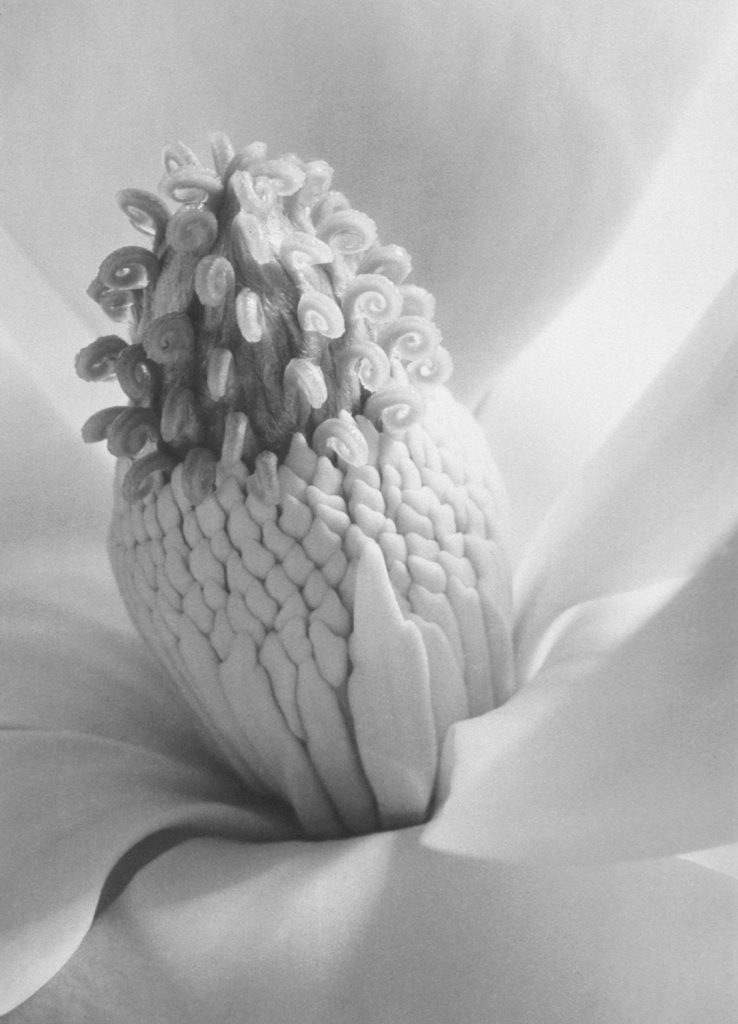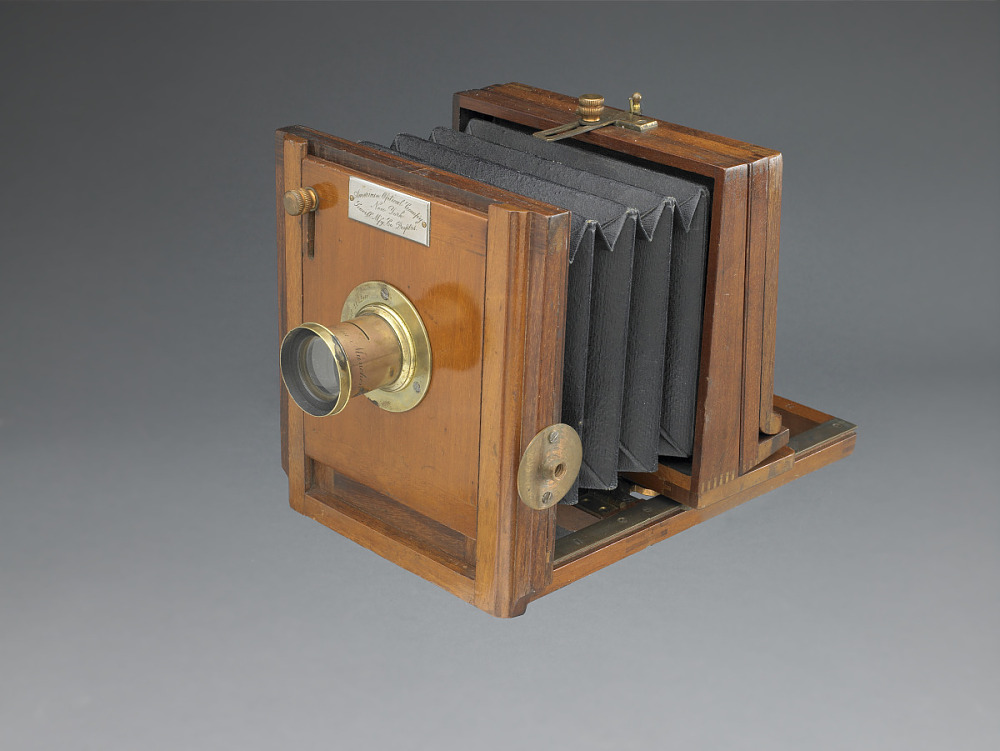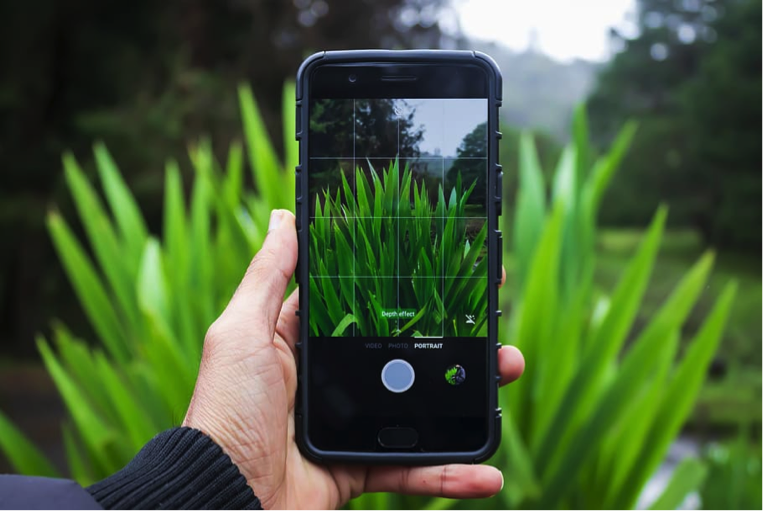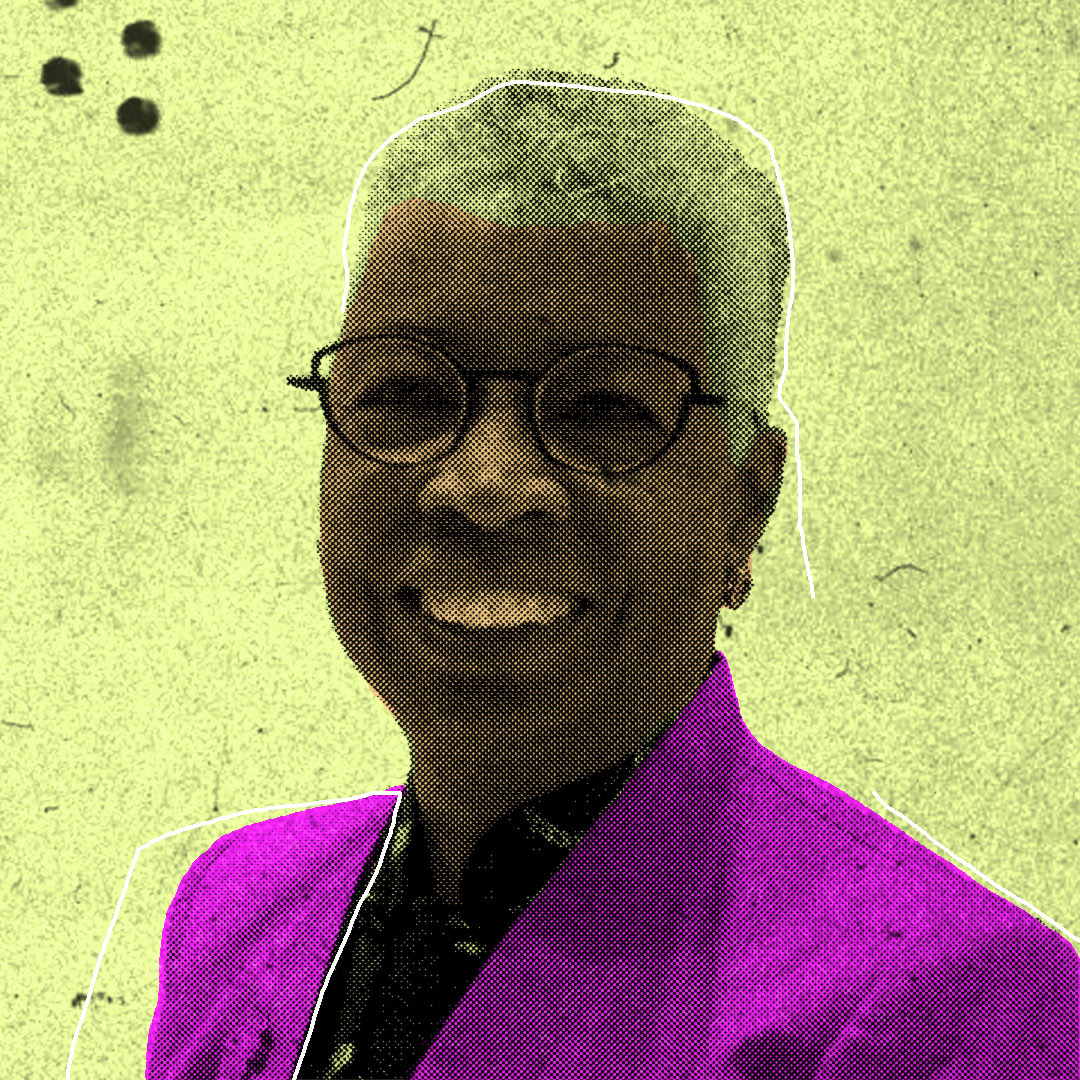SAM Creates: Through Imogen Cunningham’s Lens
Imogen Cunningham’s photograph, Magnolia Blossom, Tower of Jewels, looks closely at its subject. Through her use of macro photography—making an object appear larger-than-life—Cunningham isolates the flower from its context and transforms an everyday subject into a work of art. Her contemporary, Georgia O’Keeffe, used similar strategies in her paintings, magnifying a flower’s inner structure in order to emphasize shape and form. Look around at your houseplants, head outside to the yard, or go on a stroll to find your inspiration.

Cunningham would have likely used a 4×5” camera and her chemistry degree from the University of Washington when she created her botanical prints. Luckily, most of us can use our smartphone cameras, which are a lot smaller, lightweight, and instantly “develop” our images.

Camera, view, American Optical. PG*4626A.
Before you start, take a minute and clean your camera lens. You can clean the lens with a microfiber cloth or a cotton swab moistened with distilled water can also take off stubborn grime.
Start your walk or find a spot to sit and be still. Take a few minutes—or steps—and observe your environment. What are you drawn to? Get closer to an object. Is there an interesting macro photography subject to explore?
Once you find your subject, move your phone as close to the object as you can to remove any context like a neighbor’s house, your fence, or the couch.

As you’re discovering your composition, consider the rule of thirds, which divides an image into nine equal rectangles and places points of interest where grid lines intersect. You can overlay a grid in your camera viewfinder by selecting it as an option in your phone’s settings.
After choosing your composition, explore the focal plane, or angle at which you’re shooting your camera, by moving your phone above, in-line, and below the subject. The most common issue in macro photography is misalignment or a poor positioning of your camera lens, resulting in a blurry photo. To achieve the best focal plane, touch your smartphone screen directly where you want the emphasis of your composition to be. This will focus the lens and automatically adjust the light settings to that specific area.
Once you’re done shooting, use your phone’s editing tools to enhance your work. Test out how your image looks in black and white or silvertone for an extra nod to Cunningham’s process!
Save and share your work by uploading to social media using the hashtag #StayHomewithSAM.
Want to take the work further? Do a drawing of your photo, abstracting the subject like Georgia O’Keeffe or evoke your inner Emily Dickinson and write a poem inspired by your botanical imagery.
– Kelsey Donahue, SAM Assistant Manager for Gallery Learning & Lynda Harwood-Swenson, SAM Assistant Manager for Studio Programs
If you value the ways SAM connects art to your life, consider making a donation or becoming a member today! Your financial support powers Stay Home with SAM and also sustains us until we can come together as a community and enjoy art in the galleries again.

